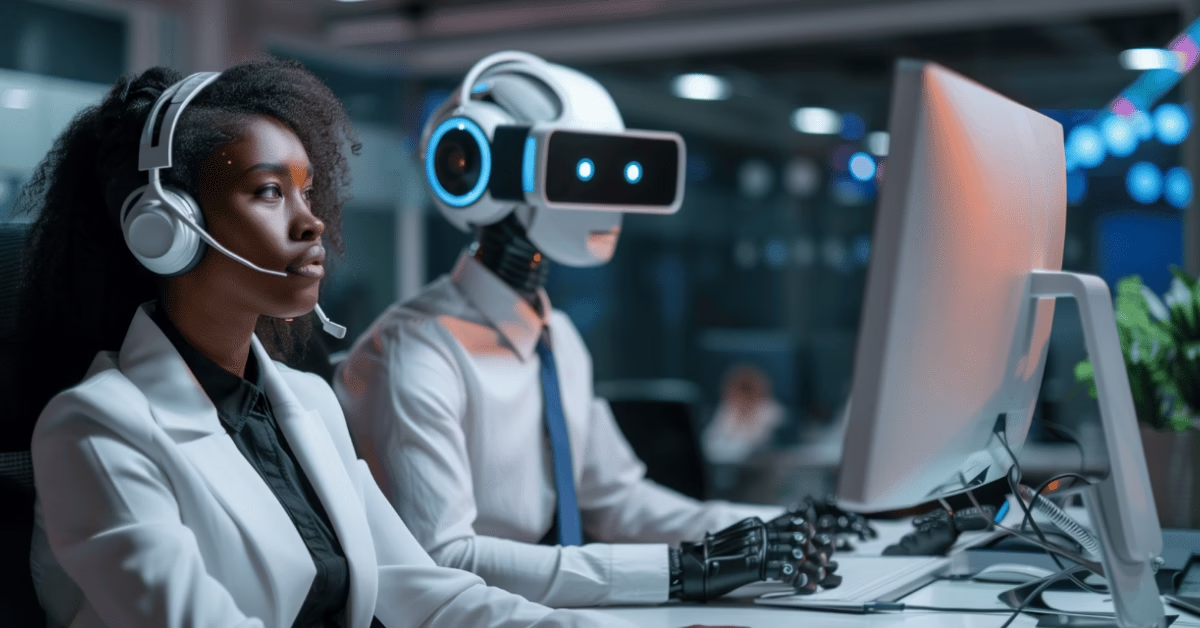As customer expectations continue to rise, businesses face the challenge of offering fast, efficient support without losing the personal touch. This is where the debate between chatbots vs human agents becomes critical. Chatbots can answer questions instantly and reduce costs, while human agents offer empathy, nuanced problem-solving, and trust-building. To deliver exceptional customer service, companies must find the right balance between automation and human interaction. In this article, we’ll explore how chatbots vs human agents complement each other, where each shines, and how integrating both can create an outstanding customer experience.
Why Understanding Chatbots vs Human Agents is Crucial
The choice between chatbots vs human agents affects customer satisfaction, brand reputation, and operating costs. Customers want quick solutions but also expect meaningful interactions when problems are complex. Ignoring this balance can lead to frustrated users or overworked support teams. By carefully managing the mix of automated and human support, companies can:
- Improve response times without sacrificing personalization
- Increase customer satisfaction and loyalty
- Streamline operations while controlling costs
- Provide 24/7 support without losing empathy
Understanding this balance is a strategic move, not just a technical decision.
What Are Chatbots and How Do They Work in Customer Service?
Chatbots are AI-powered tools that simulate human conversation and guide customers through predefined workflows. They are ideal for tasks that require quick, repetitive responses.
How Chatbots Operate in Customer Service
- Analyze customer queries in real time using natural language processing
- Offer suggestions based on browsing or interaction history
- Automate common requests like FAQs, order tracking, and appointment scheduling
- Escalate conversations to human agents when necessary
By leveraging AI, chatbots can handle a significant portion of support requests, freeing human agents for more complex tasks.
The Role of Human Agents in Customer Service
Human agents bring emotional intelligence and adaptability that AI can’t fully replicate. They handle nuanced issues and provide guidance that builds trust.
What Makes Human Agents Indispensable
- They recognize customer emotions and respond with empathy
- They resolve complex issues that require judgment and experience
- They provide personalized support tailored to individual needs
- They enhance brand loyalty by creating meaningful interactions
When customers encounter sensitive or complicated situations, human agents are essential for maintaining satisfaction.
When Chatbots vs Human Agents Make the Most Impact
Finding the balance between chatbots vs human agents starts with knowing where each excels.
Scenarios Where Chatbots Work Best
- Answering frequently asked questions instantly
- Sending reminders, notifications, and product recommendations
- Assisting with order tracking and appointment bookings
- Collecting preliminary information before passing it to a human agent
Scenarios Where Human Agents Are Essential
- Handling complaints, refunds, or billing issues
- Resolving technical problems that require detailed explanations
- Providing personalized advice and consultations
- Building rapport and long-term relationships with customers
How to Find the Right Balance Between Chatbots vs Human Agents
1. Use Chatbots as Gatekeepers
Allow chatbots to filter and handle routine queries, only transferring customers to human agents when necessary.
2. Design Smooth Handoffs
Create workflows that ensure information collected by chatbots is easily accessible by human agents, avoiding customer frustration.
3. Train Teams to Collaborate
Equip human agents with AI tools that offer suggestions and insights based on chatbot interactions, improving resolution speed and accuracy.
4. Personalize Chatbot Conversations
Leverage data such as purchase history and preferences to make chatbot interactions feel more customized and supportive.
5. Monitor and Iterate
Track response times, customer satisfaction, and chatbot handoff rates to continuously improve the balance between automated and human support.
Benefits of Integrating Chatbots vs Human Agents Effectively
Enhanced Customer Experience
A seamless transition between chatbots and human agents ensures customers feel heard and supported.
Cost Efficiency
Automating routine tasks allows businesses to scale support without proportionally increasing headcount.
Improved Employee Productivity
Human agents can focus on high-value tasks, while AI handles simple inquiries.
Increased Trust and Loyalty
When customers feel that a brand is attentive and responsive, they are more likely to stay loyal and recommend the service.
Challenges in Achieving the Right Balance
Avoiding Over-Automation
Relying too much on chatbots can make customers feel disconnected and frustrated.
Ensuring Clear Escalation Paths
Poorly designed workflows can cause delays and repeat interactions, harming customer trust.
Maintaining Data Privacy
Balancing personalization with security requires clear policies and transparency about data use.
Aligning with Brand Voice
Chatbots must reflect the brand’s personality and values, or interactions may feel impersonal.
Future Trends in Chatbots vs Human Agents
Advancements in AI are making chatbots smarter and more context-aware, narrowing the gap between automation and human interaction. Meanwhile, human agents are increasingly supported by AI tools that enhance their effectiveness without replacing their empathetic approach. The future lies in a blended model where AI assists, rather than replaces, customer service teams.
Businesses that embrace this partnership will be better equipped to meet customer expectations while staying efficient and agile.
Looking to optimize your support strategy? Check out our staff augmentation services to learn how you can integrate AI chatbots with human expertise and deliver exceptional customer experiences.
FAQs
No. Chatbots are excellent for repetitive tasks, but human agents are essential for handling complex issues and building trust.
By designing workflows that use chatbots for simple requests and enabling seamless handoffs to human agents for more personalized support.
Chatbots are best at answering FAQs, scheduling appointments, tracking orders, and sending notifications.
Human agents offer empathy, contextual problem-solving, and personalized advice that AI cannot fully replicate.
The key is integrating AI tools to assist agents, ensuring smooth handoffs, and continuously monitoring customer satisfaction to refine interactions.












